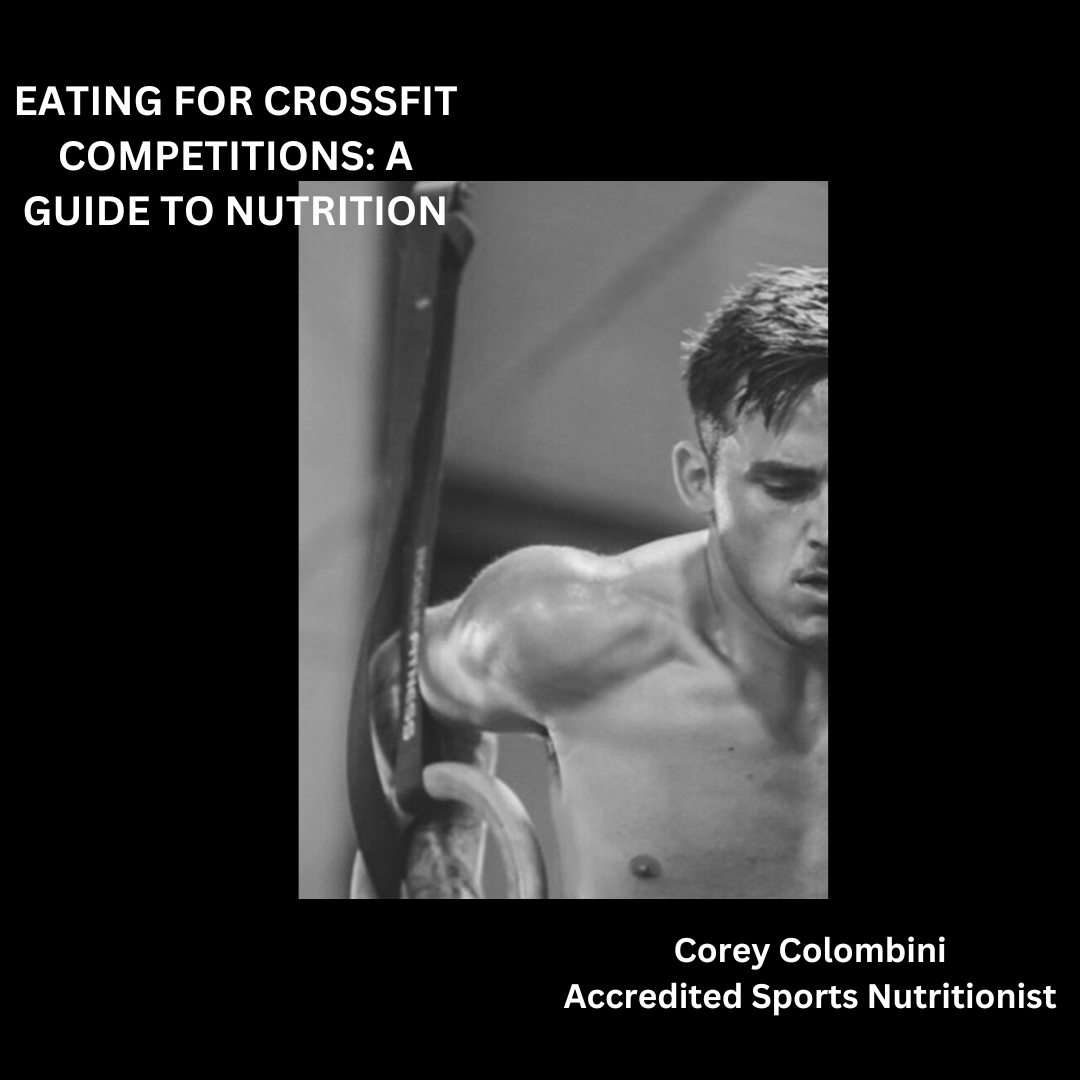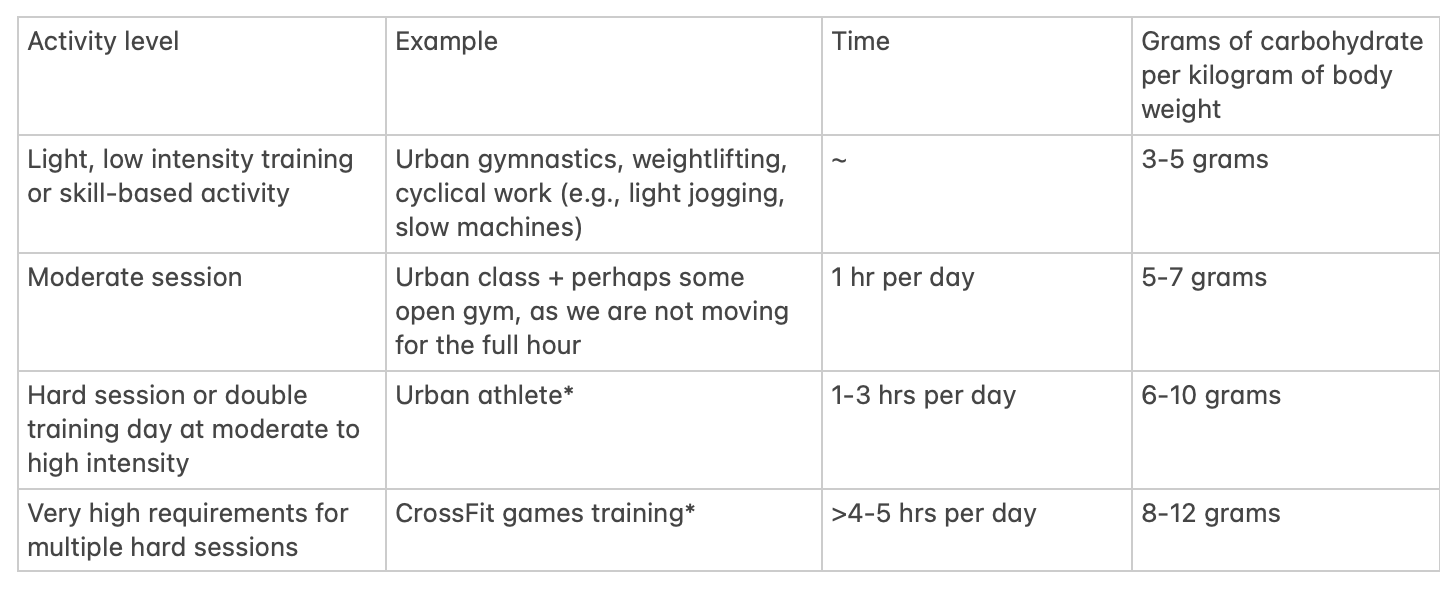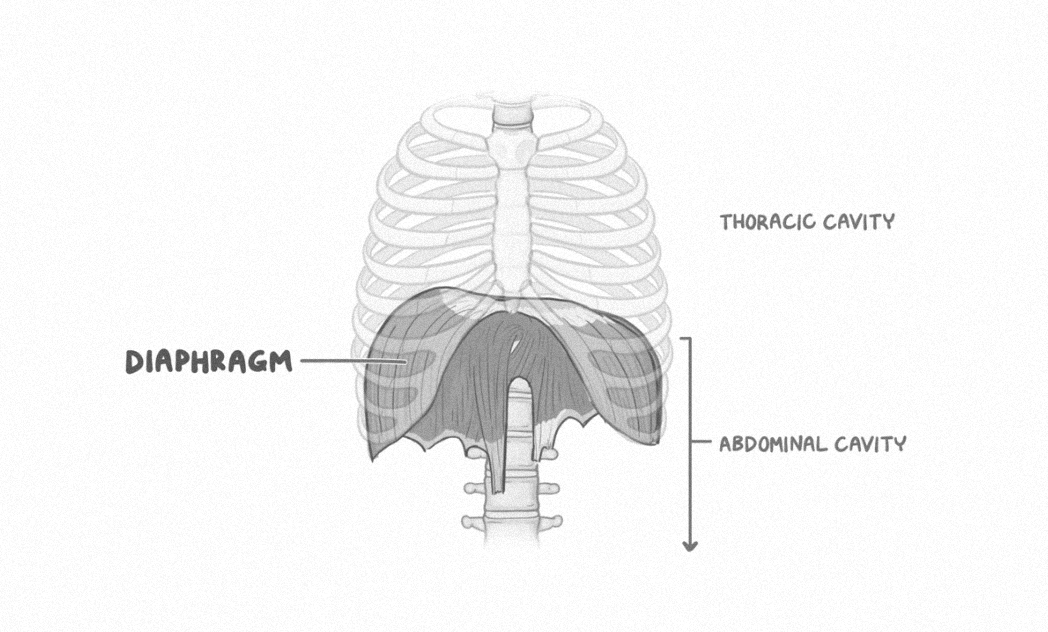|
Eating for CrossFit Competitions: A Guide to Nutrition With the CrossFit season officially underway and a few local competitions popping up, now it's time to nail your competition nutrition. Our priority is that our everyday nutritional requirements are met but adding to this is where sports nutrition should come into play. When it comes to competitions, you know that your training regimen and skill level are both important. But what about nutrition? What you eat can have a huge impact on your performance during a competition. For the aspiring athlete, understanding nutrition is key to maximizing your potential in a competition. The Basics of Competition Nutrition When it comes to eating for competitions, the basics remain the same—you want to make sure you’re eating healthy and getting enough calories so that your body has enough energy to compete. For CrossFit our main goal is to maximize your performance, which means you want to provide your body with a good fuel source. Carbohydrates are the main fuel source when training, as competition intensity goes up, so does the need for carbohydrates. If you deprive your body of carbohydrates your performance will be compromised. It’s also important to make sure you’re hydrated before competing. Dehydration can be a major factor in fatigue during competitions - so make sure to drink plenty of water in the days leading up to your competition for optimal performance! Competition Day Meal Plan
It’s important to make sure you have a meal plan in place for competition day itself. It’s best to keep your For comp day I would be looking to have a solid meal with anywhere from .5-1g/kg/BW of carbs for your morning meal and then competition day snacks around 60 mins before your workout. Have some carbs 40-80g post workout (30-45mins). Consuming carbs prior exercise will ensure your maximising glycogen storage and assisting on performance. Competition day snack ideas Cereal, Powerade/Gatorade, Oats, Pikelets, Wrap, Honey, Berries, Sour patch kids/ lollies, Raisin Toast These are all great options for competition day snacks. Liquid meals could be a good option here if the turnaround time for events is under 1 hour. If it is over an hour, you could still use liquids like Powerade or Gatorade but also using things like honey, or maple syrup on pikelets. A little secret is pickle juice; this can potentially reduce the risk/ chances of getting cramps. For a multiple day competition after the last event of the day is when you want to start adding back in whole foods protein and fiber but keep carbohydrates a main priority to help the body refuel and recover for the next day’s competition. Meals relatively light on this day since heavy food can lead to lethargy or stomach upset during events. Bare in mind on multiple event days, sugary snacks could give you an initial boost of energy but leave you feeling sluggish later on in the day when your blood sugar crashes. Supplements may be beneficial for serious athletes (especially those competing at high levels) to consider taking supplements such as beta alanine, protein powders or amino acids before competitions. Beta-alanine enhances performance by increasing exercise capacity and decreasing muscle fatigue This can help aid recovery after tough workouts while providing extra energy when needed most. Nutrition is key when it comes to performing well at competitions! Be sure to stock up on nutrient-rich whole foods prior to competition day and keep meals light throughout the event itself. Don't forget about hydrating properly too - dehydration can be detrimental when performing strenuous physical activity over long periods of time! With these tips in mind, there's nothing stopping anyone from reaching their peak performance level come game time! Good luck out there! Corey Colombini Sports Nutritionist
0 Comments
Hello everyone. My name is Nathan Cook. I am a member at CrossFit Urban Energy Burleigh and am an Accredited Practising Dietitian and Accredited Sports Dietitian. I thought I would use the first part of this blog as an opportunity to introduce myself if you haven’t met me yet. I graduated from a Bachelor of Nutrition and Dietetics in 2018, completed my additional training in 2019 to become a Sports Dietitian and then quickly returned to University to begin my PhD where I am two-thirds through investigating how to measure and manage food waste in hospitals more sustainably (e.g. measuring waste on scales and sending food waste for composting). My recreational athlete history is a mixed bag with AFL, surf lifesaving, gym and now running and obviously CrossFit. As a dietitian outside of my PhD my goals are to educate active populations on sports specific nutrition information using scientific evidence and behaviour change techniques. This month I thought I would start with carbohydrate requirements for exercise. It is important to remember that everyone’s needs will be different from the recommendations in this blog and it is best to see a sports dietitian for a personalised approach. Please also note these recommendations do not take into consideration those with blood glucose regulation issues such as insulinaemia and diabetes. The availability of carbohydrates to be used by the muscles and central nervous system during exercise is important for when optimal performance is desired. Some sessions you will do in training will have low and or high carbohydrate needs, and therefore require low and or high carbohydrate availability. Basically, you want high amounts of carbohydrate availability for high intensity sessions such as a Tuesday night strength and metcon piece in a 1-hour class, and low availability for a Monday night gymnastics or Thursday night weightlifting session. This is otherwise known as the concept, ‘fuel for the work required’, whereby we appropriately fuel for the sessions requirements. To put this into context you would feel a lot different at the end of typical Urban class versus the gymnastics session where there is not a lot of heavy breathing, plenty of breaks, and less intensity, therefore less carbohydrate would need to be available to the working muscles and therefore consumed in the day/s prior, compared to a combination of heavy squats, machine calories, burpees, running, and wall balls. To display the recommendations for carbohydrate intake I have made a few tables. You can view a prettier version of the below tables on my instagram @developmentdietetics Table 1. Daily needs for fuelling and recovery *If you have < 8hrs between 2 sessions/events e.g. am/pm consume 1-1.2g in the first 4hrs post session 1 and then continue intake as normal diet Table 2. Competition fuelling Table 3. Carbohydrates during exercise (usually not required in CrossFit unless at the games level (e.g., Murph, marathon row) Now what do these carbohydrate amounts look like when we consider food? I have chosen some common carbohydrate containing foods in Australia to represent these amounts for a 70kg male and 60kg female to fuel before an intense Urban CrossFit class. So, to fuel for the training session on the day at 4:00pm within 1-4 hours of the class it will be important to consume some carbohydrate at lunch time (wholegrain bread, rice, potato) and if desired or required an easy snack before the session (rice crackers + spread, fruit, a crumpet and honey). I am going to present only the lower end of the recommendations. To get 1 gram of carbohydrate for the 70kg male (70 grams of carbohydrates) this would look like 3 slices of Burgen soy-lin seed bread as a sandwich or eggs on toast, 200 grams Sunrice brown rice with vegetables and a lean protein of choice, 120 grams of Uncle Toby's quick 2 minutes oats in a smoothie. For the 60kg female this could look like 80 grams of barilla spaghetti in a pasta dish, 2 super soft mission wholegrain wraps with some filling of choice (perhaps tuna and salad), 80 grams of vermicelli noodles in a vegetable and tofu stir fry. So, you can see from these examples to reach our carbohydrate requirements for exercise we need to consider eating a more food than the standard unactive population. Now remember these are just guidelines, not mandatory and I have only provided an example of a 1 gram of carbohydrate per kilo gram of bodyweight example and not considered the larger end of the spectrum or represented other heavier or lighter bodyweight categories. It would be my recommendation to try a fuelling strategy for yourself and see if it changes your workout performance or perceived effort in the workout, and then adjust up or down in grams of carbohydrates per kilogram of body weight to find what best suits you for performance and gut comfort. If you train in the mornings, you have the option to train fasted considering an adequate meal containing carbohydrates was eaten the night before, or I would suggest a small bowl of low fibre cereal, or 1-2 pieces of toast with jam, or a banana mixed in with yoghurt. Strategies which manipulate the timing, amount, pattern, type, and quality of carbohydrate can also be used but will not be discussed in today's blog. If you have any further questions regarding the information above you can listen to the full episode of my podcast @thecookscommunity where I go a bit more in depth and explain the science behind these recommendations and some more examples of these guidelines in practice – 3. Penne and Red Sauce | Nutrition explained | Carbohydrates for training and competition https://thecookscommunity.podbean.com/ If you have any other nutrition related questions, please approach me in the box, DM me on instagram or email me on cookn96@hotmail.com - - - - AuthorNathan Cook Of course, breathing is important. IT HAPPENS AUTOMATICALLY AND KEEPS US ALIVE, BUT MOST OF US NEVER ACTUALLY THINK ABOUT HOW WE ARE BREATHING. Did you know that the way you breathe may lead to pain and tightness in your body? Poor breathing habits can lead to neck pain/tightness, jaw pain, headaches, midback and lower back pain/tightness, pelvic floor pain, shoulder and hip impingement, increased stress levels and decreased athletic performance. The average human takes 22,000 breaths per day. That’s a lot of reps to be performing poorly and a lot of opportunity to create a change. What is optimal breathing and why is it important? Known as diaphragmatic breathing, uses the diaphragm (our main breathing muscle that sits underneath the ribcage) to expand the rib cage and abdominal cavity 360 degrees. It enables the body to take in adequate oxygen (inhale) and get rid of carbon dioxide (exhale). Diaphragmatic breathing is the foundation to be able to create sufficient core stability which is extremely important throughout exercise and our daily movements and activities. Increasing our diaphragmatic breathing capacity can enable increased athletic endurance so we can perform better for longer, less tightness in the body and enhanced quality movement. What is non-optimal breathing? Also known as “stress or chest breathing” predominantly uses the accessory (smaller) muscles in the neck to “lift” the rib cage and suck air in. This shallow breathing only into the upper chest enables less oxygen intake and causes overuse of the neck, chest, and shoulder muscles leading to tightness and pain. Chest breathing can cause overarching of the low back on inhale and the inability to create core stability. It can also trigger cortisol—the stress hormone—to kick in. This type of breathing should be utilised only when needed during hard aerobic activity (as oxygen demands are increased) but NOT be the primary method for getting your oxygen in through day-to-day life. How do we address this? First try this test:
This test can be used as a breathing exercise: Imagine you have a balloon inside your abdominal cavity and as you breathe in you want the balloon to expand 360 degrees (the front, back and sides of your torso). This may seem strange or challenging at first, but it just takes practice and consistency. The diaphragm is a muscle and like any other muscle it needs to be trained and the more it’s trained the more endurance it will build and easier it will feel. - - - - AuthorDr Georgia Bahnsen |







 RSS Feed
RSS Feed